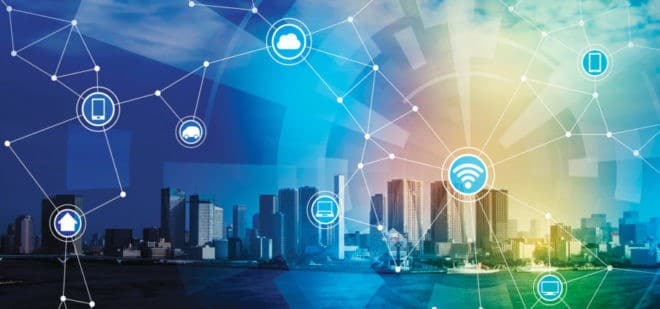- Wireless Broadband Alliance’s (WBA) Wi-Fi network and LoRa Alliance’s LoRaWAN to be used for Massive IoT applications.
- Former best suited for short and medium range uses while the latter is best suited for long range uses.
 The Wireless Broadband Alliance (WBA) and the LoRa Alliance have come together to create new business opportunities by using Wi-Fi networks that are traditionally built to support critical IoT applications and merging it with LoRaWAN networks that are traditionally built to support low data rate massive IoT applications.
The Wireless Broadband Alliance (WBA) and the LoRa Alliance have come together to create new business opportunities by using Wi-Fi networks that are traditionally built to support critical IoT applications and merging it with LoRaWAN networks that are traditionally built to support low data rate massive IoT applications.
Excellent coverage
With the growing popularity of IoT use cases in domains that rely on a huge number of connections over large areas, are driving the demand for massive IoT technologies. Massive IoT applications are less latency sensitive and have relatively low throughput requirements. But they require huge volume of low-cost, low-energy consumption devices on a network with excellent coverage, which can be achieved with Wi-Fi networks.
Preferred technologies
Wi-Fi connectivity covers short- and medium-range use cases at high data rates and may require more power, making it the preferred technology for applications like real-time video and Internet browsing. Meanwhile, LoRaWAN covers long-range use cases at low data rates, making it the preferred technology for low bandwidth applications for temperature sensors in a manufacturing plant or vibration sensors in concrete.
Use cases
When implemented in combination with one another, Wi-Fi and LoRaWAN networks optimize a number of IoT use cases, such as:
- Smart Building/Smart Hospitality: Wi-Fi can be used for things like security cameras and high-speed Internet, and LoRaWAN can be used for smoke detection, asset and vehicle tracking, room usage and more.
- Residential Connectivity: Wi-Fi can be used to connect billions of personal and professional devices in homes, while LoRaWAN can be used for home security and access control, leak detection, and fuel tank monitoring, and many other applications.
- Automotive & Smart Transportation: Currently, Wi-Fi is used for passenger entertainment and access control, while LoRaWAN is used for fleet tracking and vehicle maintenance. Hybrid use cases can include location and video streaming.
“Wi-Fi and LoRaWAN are two important technologies utilizing the unlicensed spectrum, and they already address a large proportion of IoT use cases,” said Tiago Rodrigues, General Manager, WBA. “The Deployment Synergies paper highlights the ways in which these technologies are impacting private-public business models and enabling IoT services, while also identifying ways in which the technologies complement one another and can be used to further expand the Internet of Things.”
“The reality is that no one single technology is going to fit the billions of IoT use cases,” said Donna Moore, CEO and Chairwoman of the LoRa Alliance. “It is collaborative initiatives like this one with Wi-Fi that will drive innovation to solve important issues, leverage an even broader range of applications and, ultimately, ensure the success of global mass IoT deployments in the future.”
The WBA and LoRa Alliance intend to continue the union of Wi-Fi and LoRaWAN technologies.








